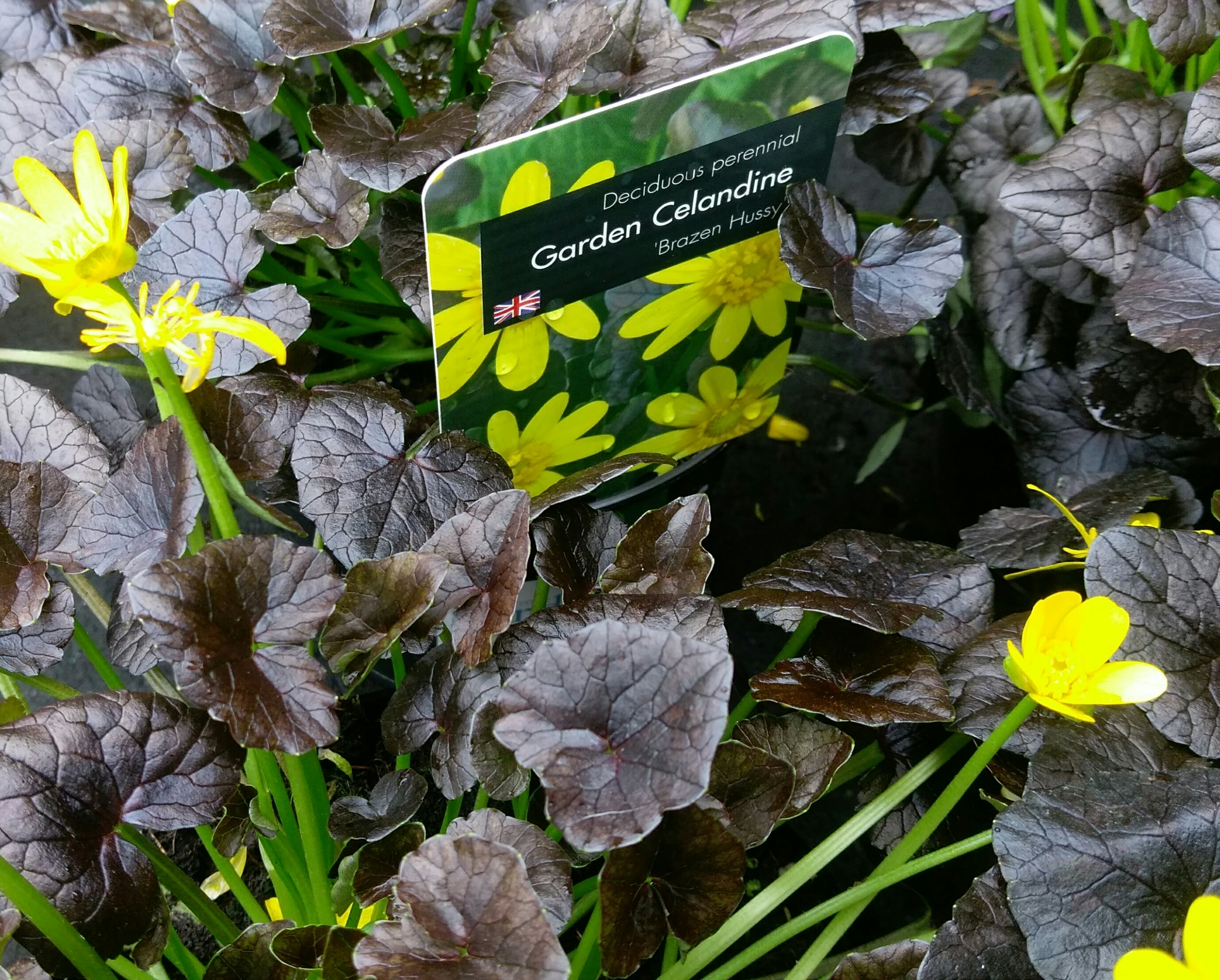
28 Mar The Pause…Today: What is garden celandine; lesser celandine?
During the months of March and April, areas of my garden are awash with lesser celandine, usually a green carpet…today, in the garden centre, I came across a ‘Brazen Hussy’ a plant labelled garden celandine! This plant looked familiar although a little strange, the leaves presented as a mahogany colour instead of the usual green. ‘Interesting’, I thought…’I wonder if ‘Brazen Hussy’ is the shy sister to lesser celandine!’
Lesser celandine, latin name Ranunculus ficaria L. also known as Ficaria verna, is a member of the buttercup family and is particularly happy growing in damp free draining soil during early spring. All plants of the buttercup family contain the compound Protoanemonin a bitter-tasting oil which is formed when the raw plant is chewed or crushed, it is a skin irritant. Some food foragers suggest that the root tubers and young celandine leaves can be eaten before the flowers appear, however, caution is advised as the compound Protoanemonin is a toxin and should never be eaten raw. Do your research before hand, from a trusted source.
Lesser celandine may have a place in the wild or woodland garden however, it can be seen as an invasive weed in the cultivated garden. Once in the garden, it is tricky to eradicate spreading rapidly via its persistent root tubers and bulbils. As the garden is dug over the bulbils freely break away from the parent cluster. Initially, they can be mistaken for bits of gravel or granular plant food or little insect eggs. I have spent many long hours sifting and picking through the soil in an effort to eradicate them! This spring, once again, my garden including the lawn, is a green carpet of celandine leaves! Wondering if ‘Brazen Hussy’ is equally tenacious! I advise caution when introducing this plant into your garden.
Interesting history/folklore fact: through the ages lesser celandine has been used as a herbal medication to treat piles/haemorrhoids. As each cluster of tubers/bulbils were thought to resemble piles, an extract of the plant was made into an ointment and applied topically, hence, the plant became known as pilewort!
For me, it is time to change my thinking and work with little celandine. I will take inspiration from Wordsworth and Cicely Mary Barker and welcome this Spring’s little celandine fairies. Wordsworth was fond of little celandine, writing three poems to the flower and Cicely Mary Barker also appeared to have a soft spot for the plant, including a little celandine fairy in her collection of flower fairy drawings and poems.
The Celandine Fairy
Before the hawthorn leaves unfold,
Or buttercups put forth their gold,
By every sunny footpath shine,
The stars of Lesser Celandine.
Cicely Mary Barker (1895 – 1973)
The Lesser Celandine
There is a flower, The Lesser Celandine,
That shrinks, like many more, from cold and rain
And, the first moment that the sun may shine,
Bright as the sun himself, ’tis out again!
When hailstones have been falling, swarm on swarm,
or blasts the green field, and the trees distressed,
Oft have I seen it muffled up from harm,
In close self-shelter, like a thing at rest.
(1804 – 1807) – Wordsworth
If you have any experience with Ranunculus ficaria ‘Brazen Hussy’ I’d be interested to hear how you’re getting on.



Sorry, the comment form is closed at this time.